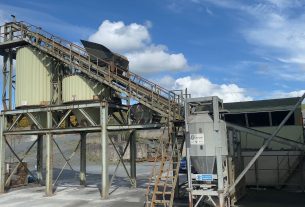Challenger brands in the automotive market are introducing innovation at every stage of the manufacturing process. From electric vehicle design to mega production plants, these businesses are achieving new levels of efficiency and automation, prompting the rest of the market to invest fast to keep up.
Within the supply chain, automated loading and unloading of components is one example of how automotive companies are reducing cost and risk. Still, Tier 1 suppliers are asking why every Original Equipment Manufacturer (OEM) has a different set of demands for component storage and transport. Why add complexity to a market already struggling with supply chain disruption, inflation and unpredictable demand?
Wouter Satijn, Sales Director, Joloda Hydraroll, discusses the benefits of a standardised, end-to-end automated model.
Competitive market
Inflation-driven cost pressures. Ongoing supply chain disruption. A lack of consumer confidence leading to erratic demand. And, of course, a set of new competitors transforming the concept of automotive design and manufacture. How can traditional OEMs compete? How can challengers succeed? Efficiency and automation are vital, but for an industry renowned for Just-in-Time (JiT) manufacturing and slick supply chain operations, where are the opportunities to drive additional cost savings and performance improvements?
One key area where brands can compete to differentiate themselves is within their production sites and manufacturing processes. Supply chains and factories are becoming more connected with technologies such as AI, 5G, and robotics to ensure efficiency and transparency at every stage. In the loading bay, replacing forklift trucks, winches and ropes with automated loading and unloading systems has proved faster and safer, while protecting valuable components from damage. Drastically reducing the time taken to unload items has minimised driver waiting, improving delivery certainty and thereby supporting greater JiT efficiency throughout the supply chain.
For example, wheels are traditionally unloaded using a ‘one wheel at a time’ system – a process that takes up to two hours to unload one truck. By comparison, an automated wheel unloading system can complete the entire process in less than three minutes, delivering a step change in efficiency.
Standards imperative
Now, while many automotive companies are exploring the power of automated unloading and loading systems, another major problem is adding unnecessary cost and complexity to the Tier 1 supply base. Today, every OEM has a different set of demands for component storage and transport, which is placing a huge burden on suppliers to invest in an array of solutions to support each individual OEM contract. Inevitably, this financial burden is slowing down the adoption of automation to the detriment of the entire industry.
There is no value in this approach. OEMs share suppliers; suppliers work with multiple OEMs. Every organisation requires the fastest, most efficient way to load, move and safely offload products to meet tight production deadlines. Automation is transformative, yet by enforcing different requirements, OEMs are constraining progress. Working together, with an automated loading partner, the industry could define a set of standard requirements to which all suppliers can comply, making automation quicker and cheaper to achieve.
Working together
It is time for the automotive industry to work together. With a standardised model for component storage and transport, the industry could transform the adoption and expansion of automated unloading and loading solutions. Furthermore, a standardised, end-to-end automated model can provide the foundation for continuous improvement. It will support the creation of efficient, lower-risk operating models required for automotive brands to manufacture innovative products and truly compete. Without standards, however, that competitive opportunity could be missed.





